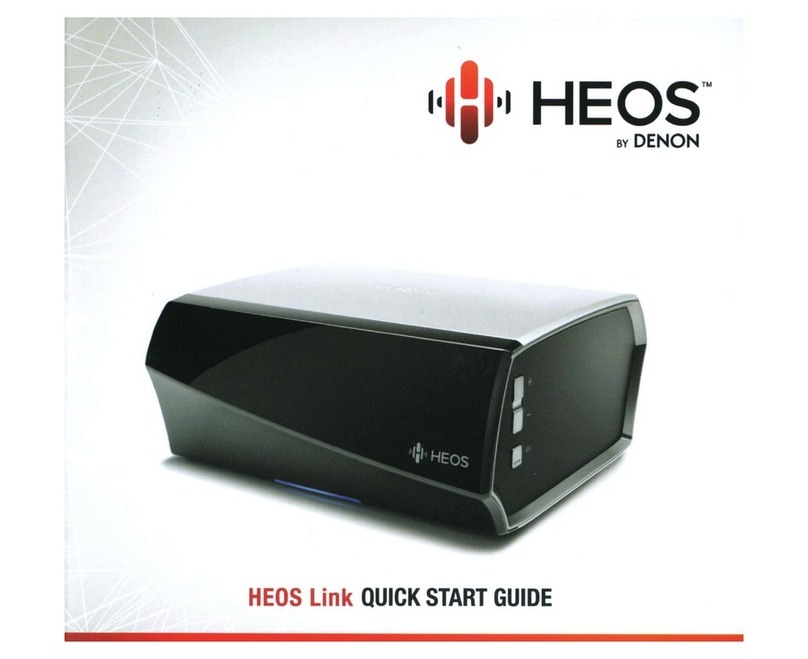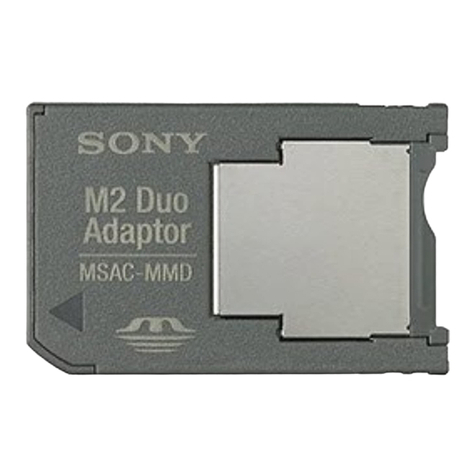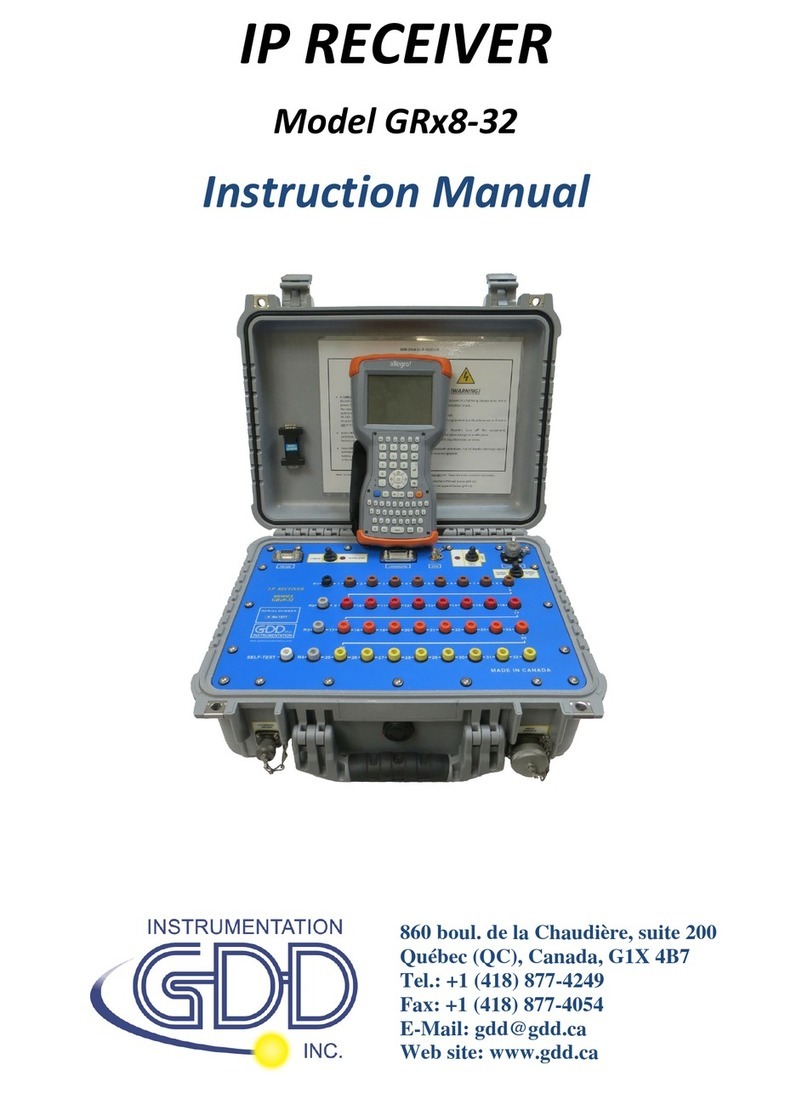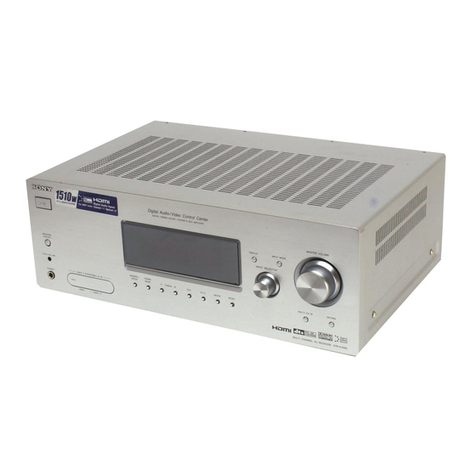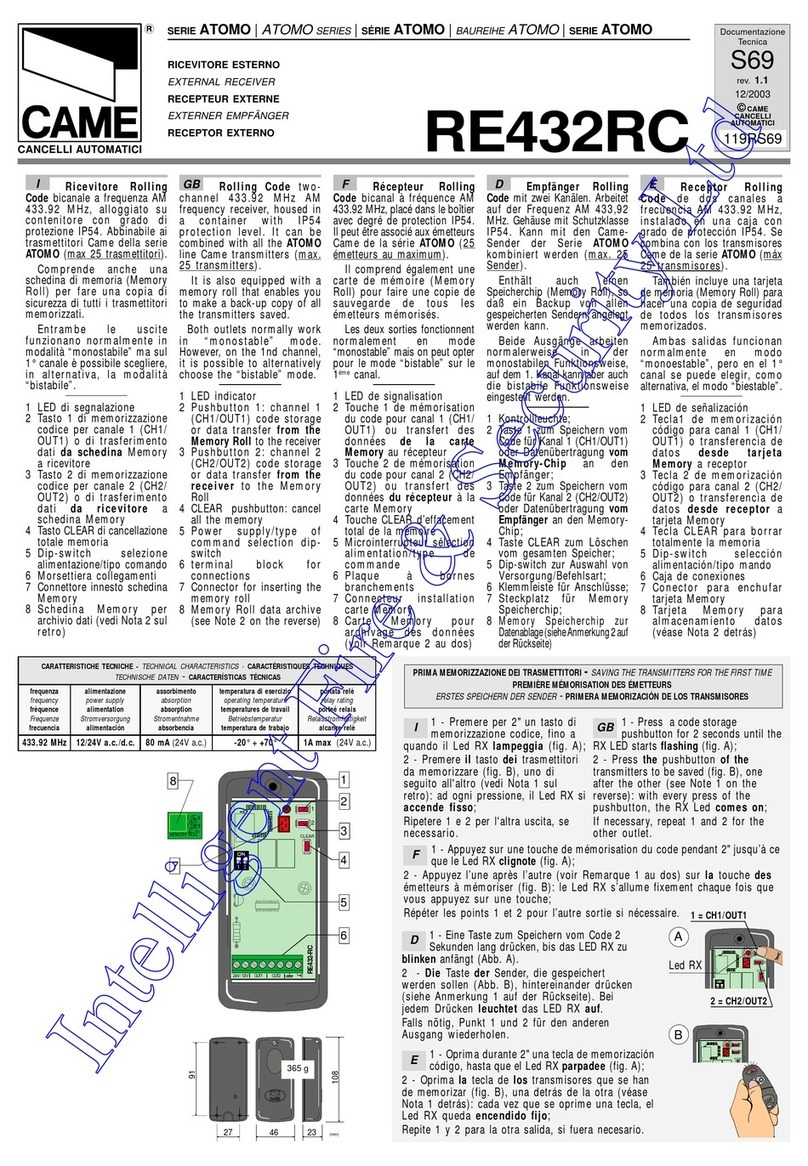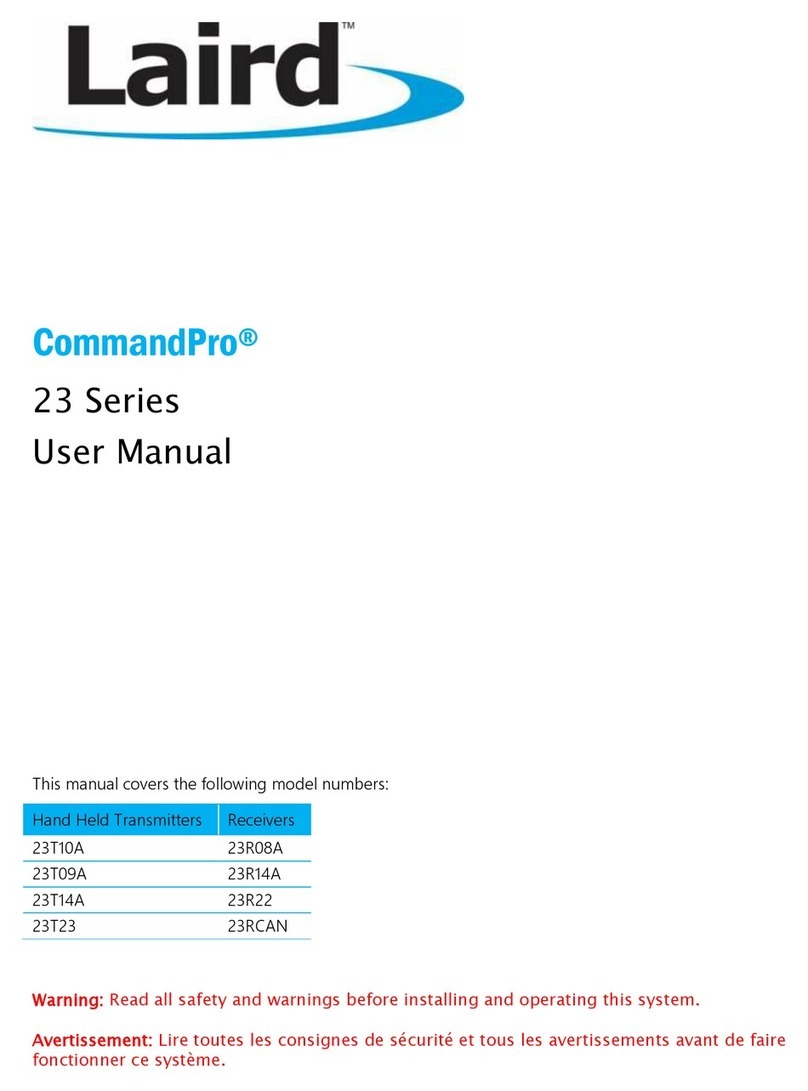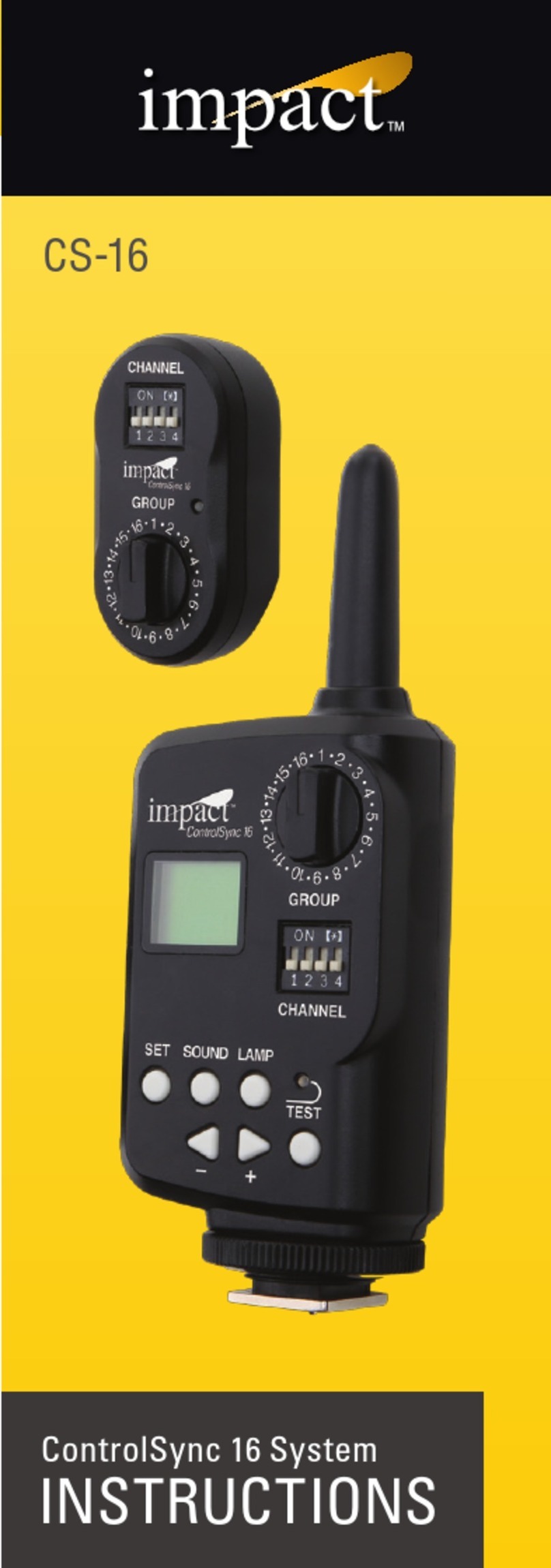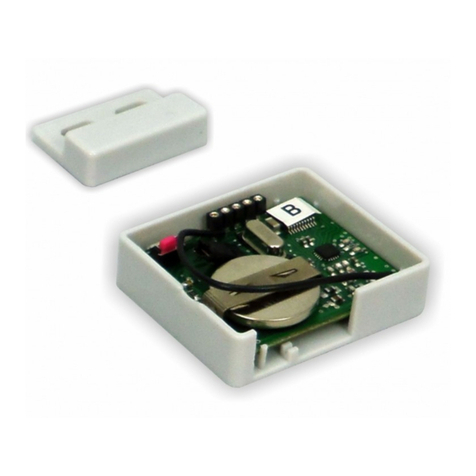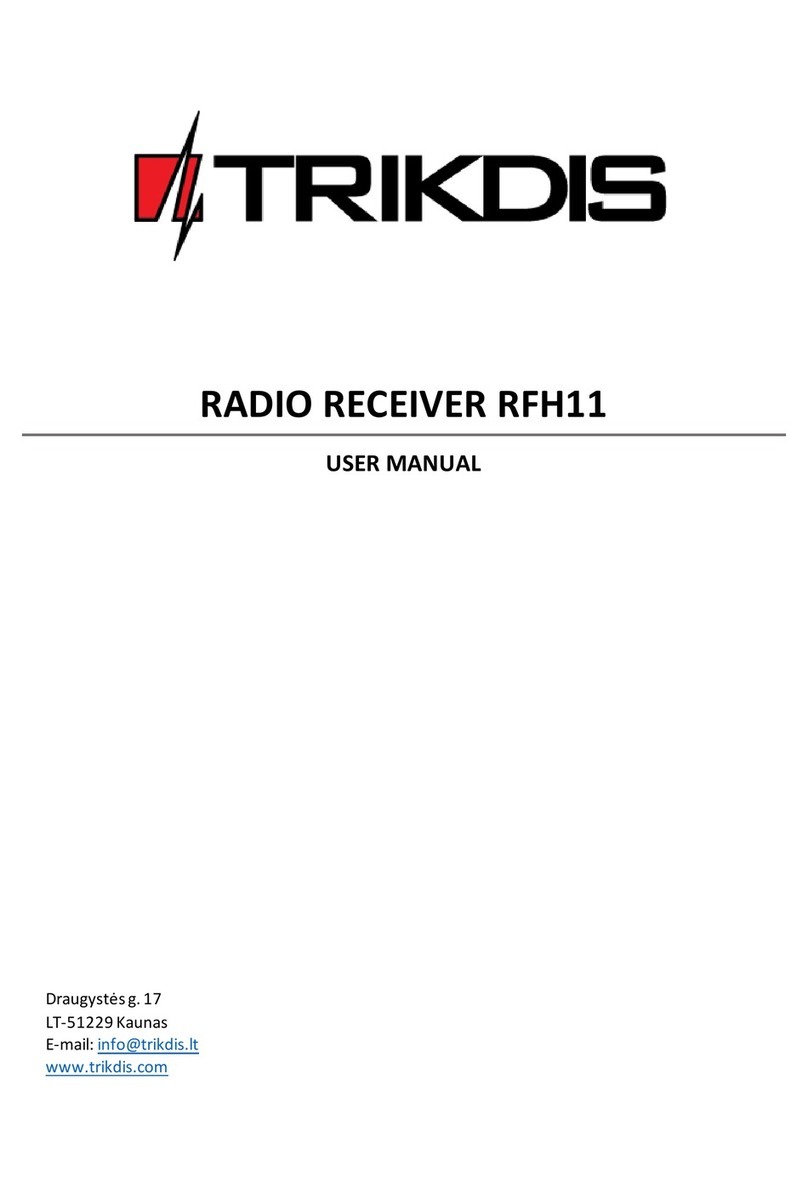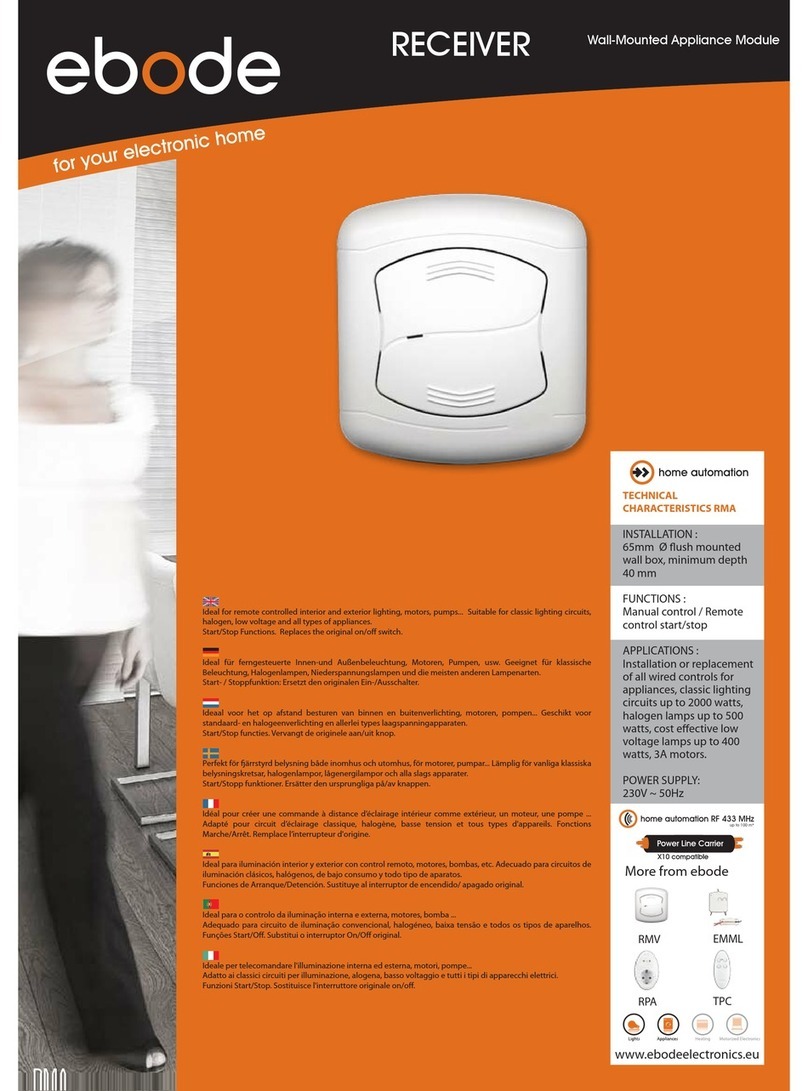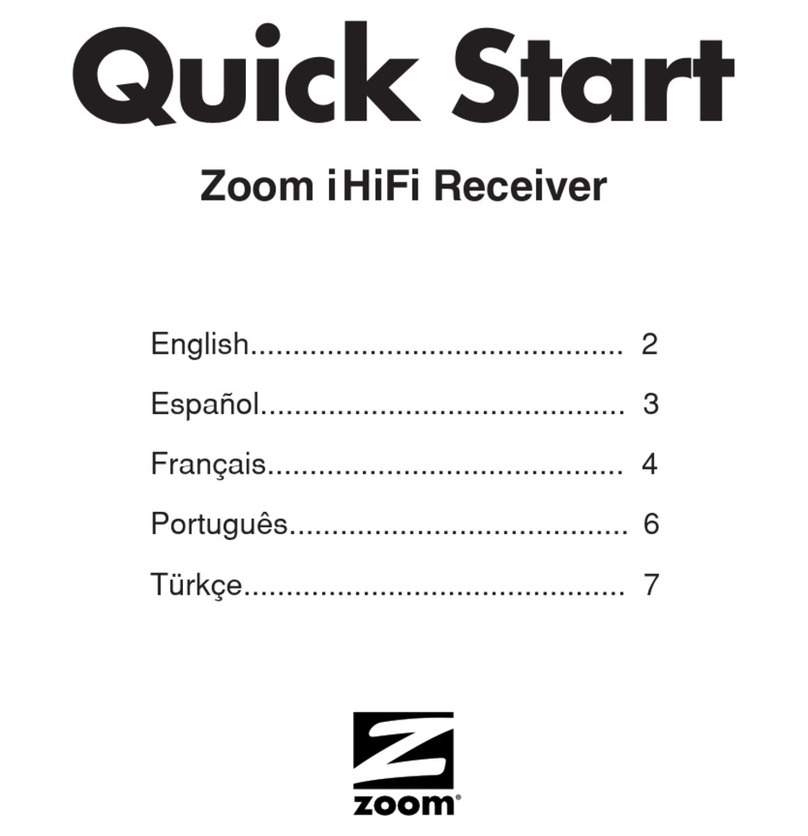Metal Samples MS2540 User manual

MS2540 Current Loop Receiver
with RS485 Communication
User Manual
MetalSamplesCompany
ADivisionofAlabamaSpecialtyProducts,Inc.
152MetalSamplesRd.,Munford,AL36268Phone:(256)358‐4202Fax:(256)358‐4515
E‐mail:[email protected]Internet:www.metalsamples.com

.

2
SECTION 1 – INSTALLATION
Shipping and Receiving...................................................................................................................................... 3
Mounting ............................................................................................................................................................ 4
Electrical............................................................................................................................................................. 5
Physical Dimensions........................................................................................................................................... 6
Specifications ..................................................................................................................................................... 7
Equipment Safety ............................................................................................................................................... 9
SECTION 2 – START-UP AND OPERATION
Receiver Start-Up...................................................................................................................................10
Operation...............................................................................................................................................11
Controls Operation..................................................................................................................................13
Title Screen ........................................................................................................................................................ 13
Main Screen ....................................................................................................................................................... 14
Setup Screen ..................................................................................................................................................... 16
Data Chart Screen............................................................................................................................................... 18
Status Screen ...................................................................................................................................................... 19
Option Settings Screen ....................................................................................................................................... 21
Calibration Screen ............................................................................................................................................. 22
Help Screen ...................................................................................................................................................... 23
SECTION 3 – MAINTENANCE
General Preventive Maintenance........................................................................................................................ 24
Fuse Replacement............................................................................................................................................... 24
SECTION 4– TROUBLESHOOTING
Troubleshooting Procedures............................................................................................................................... 26

.

3
1. INSTALLATION
SHIPPING AND RECEIVING
Equipment is carefully prepared for shipment to protect it during transit and to enable the user to
install it with a minimum amount of reassembly.
Upon receipt, equipment should be carefully inspected for transit damage. If damage is
apparent, notify Metal Samples and the carrier for claims inspection.
Unloading
Open the package and remove the instrument carefully. The instrument contains a display screen.
While removing, utmost care should be given to the display.
Cleaning
Clean the equipment thoroughly to remove any foreign material that may have accumulated
during shipment.
Installation
Place the receiver instrument in a convenient location, preferably away from heat producing
sources or direct sunlight.

4
MOUNTING

5
ELECTRICAL
Main Power Connection
Connect Single Phase, 100- 240V AC, 50/60 Hz to the plug provided in the bottom of the unit.
The maximum current requirement is 2 A.
Note: In some cases, the instrument is shipped without a connector on the power cord. Each
locality should inspect the power cord and install the proper connector if necessary. The
connector should be installed in a properly grounded outlet for proper over current and earth
fault protection.
Transmitter Connections
1. Connect ‘+’ Ve terminal of the transmitter to the TB1-1 (+) terminal.
2. Connect ‘-‘ Ve terminal of the transmitter to the TB1-2 (-) terminal.

6
RS485 Connections
1. Connect ‘D +’ of the DCS / PLC to the TB2-1 (D+) terminal.
2. Connect ‘D -‘ of the DCS / PLC to the TB2-2 (D-) terminal.
3. Connect Signal Ground of the DCS / PLC to the TB2-3 (SG) terminal
4. Connect Terminating Resistor terminal.
Ethernet Connections
Connect the unit using Straight RJ45 cable to the Ethernet switch or Router. If you are
connecting to a PC, use Crossover RJ45 cable. Before connecting it to the local network please
contact your network administrator for proper IP address configuration of the equipment.
Warning: Duplicated IP address may cause network failure at the installation site. Consult with
your Network Administrator.
ADJUSTMENTS
Receiver functions must be adjusted and operated only by those authorized personnel who have
read and who thoroughly understand the descriptions of the various control functions presented
in this manual.
STORAGE AND INSTALLATION ENVIRONMENT
Protect the receiver instrument from mechanical stress, humidity, dust and thermal damage.
Storage temperature is -20 C to + 60 C. operating temperature is+15 C to +35 C.

7
PHYSICAL DIMENSIONS
0.75”

8
SPECIFICATIONS
Input
Inputs: 4-20mA current loop from one ER or LPR corrosion
transmitter
Current Loop Source Voltage: 24 VDC
Input Impedance: 250 ohms
Maximum Current Loop Distance: 10,000 feet (3,048 meters)
Output
Outputs: RS-485 Modbus, Ethernet
Display
Type: Color touch screen
Displayed Values: Metal Loss (mils or mm) or Corrosion Rate (mpy or mm/y)
Resolution: +/-0.1 mpy or 0.01 mil
Power Supply
Supply Voltage: 100 to 240 VAC, 1 phase, 50/60 Hz
Current: < 2 Amps
Physical Data
Operating Temperature: 32oF to 122o F (0o C to 50oC)
Weight: 4 lbs (1.9 kg)
Mounting Type: Panel Mount
Dimensions: 9.85” x 11.85” x 7.75” (25.02cm X 30.10cm X 19.7cm)
Network
Use Cross over cable to connect the equipment directly to PC
Use Straight Cable to connect to the network switch, router
Included Accessory Items
Power cord, mounting tabs

9
EQUIPMENT SAFETY
Always follow these warnings and safety procedures:
Before attempting to operate or perform any service functions, all operators and service
personnel should read this manual to become familiar with the complete operation of the
equipment. Becoming familiar with all operating procedures will greatly reduce the possibility of
accidents or injury.
ONLY QUALIFIED OPERATORS AND MAINTENANCE PERSONNEL THAT HAVE COMPLETE AND
CORRECT KNOWLEDGE OF THE RECEIVER INSTRUMENT SHOULD PERFORM ALL
OPERATIONS AND MAINTENANCE PROCEDURES.
Potential Hazards
A. Electrical
!!DANGER!!
Do not touch electrically live components. Before performing any maintenance procedures,
make sure that the main switch located on the bottom of the instrument enclosure is in the “OFF”
position.
The Receiver instrument must be properly grounded. Failure to do so will result an electrical
damage. Damaged electrical connections or wires should be replaced before power is applied.
All covers must remain securely in place when power is applied or electrical shock may result.
Always follow these electrical system safety procedures:
Follow proper plant, regional and national safety procedures while servicing the electrical
systems on this equipment.
Remove all metal items, such as rings, metal necklaces and wrist watches. These are
electrical hazards. Medical alert jewelry should be worn with caution.
Use insulated tools when working on electrical equipment to reduce the possibility of shock.
When troubleshooting with power activated, know the amount of voltage present in all areas
before troubleshooting.
Always use fuses of a smaller capacity than the safe capacity of the line or equipment it
serves.

10
2. START UP & OPERATION
RECEIVER START-UP
If the Receiver is a new one removed from the package or has not been used for an extended
amount of time (overnight, weekend, or holiday), follow the procedure below to start the
equipment:
1. Refer to ‘MS2540 Receiver Connection Details’ for detailed receiver connections to
transmitter and DCS/PLC/PC.
2. Ensure the transmitter connections are connected properly to the receiver unit.
3. Ensure the DCS /PLC/ PC is connected to the receiver.
4. Ensure the power cord is connected and power is turned on. The main switch is located
under the equipment. The green light illuminates once the switch is on.
5. If the receiver is turned on after a long time, follow step 7.
6. When the power is turned on, the equipment boots up and Receiver title page appears for
a short time and Probe Initialization message appears on the screen. Also Probe
Initialization message appears on the screen if the equipment lost the probe life data
setting during a program update.
PROBE INITIALIZATION MESSAGE
Pressing ‘OK’ on the message takes the display to the Options Settings page. You may
enter the right probe life using the pop up keyboard on the screen. Refer to the Option
Settings Screen for detailed settings (pg. 22).
7. When the power is turned on, the equipment boots up and Receiver title page appears for
a short time and probe initialization message appears on the screen if the unit is a new
one. The display changes to main page which shows the metal loss and corrosion rate
display, if the equipment is turned on after a long time.
8. After approximately a minute the display updates the current metal loss value.
9. Check and ensure the probe life data on the Settings page is correct or if it requires to be
changed according to the probe connected.

11
OPERATION
The MS2540 is a line powered current loop receiver that provides 24V DC to power a 2 wire 4-
20 mA instrument loop, and provides a display of the loop value in metal loss and calculated
corrosion rate. The device can also be connected to the DCS/PLC/PC via RS485 Serial
Communication.
The corrosion rate time period can be set with different intervals of 48 hours, 7 Days, 15 Days
and 30 Days. The corrosion rate is calculated using a simplified algorithm that calculates every
30 minutes based on the metal loss change over the previous 48 hours to 30 days according to the
setting.
The metal loss values are stored in the compact flash card with time stamp value. The same can
be used for metal loss analysis at any given time.
Universally acceptable MODBUS protocol is used for RS485 serial communication hence no
special software is required to communicate with the receiver. Also up to 32 receivers can be
connected to DCS/PLC/PC via Daisy chain. The Modbus data can be easily accessible real time.
The built-in web server also can be used to monitor the display on the remote computer through
the network.
Output
The Metal loss is calculated using one of the following formulas.
Metal Loss (mils) = (IL -4 /16) X Probe life
Metal Loss (mm) = (IL -4 /16) X Probe life X 25.4
Where:
IL = Loop Current in mA
ProbeLife = Usable portion of probe element thickness in mils (See Table 1.)

12
TABLE 1 : PROBE LIFE AND ELEMENT ID
Element
Type
Element
Thickness
Probe Life
Element Identifier
Wire Loop 40 mil 10 mil WR 40
80 mil 20 mil WR 80
Tube Loop
4 mil 2 mil TU 04
8 mil 4 mil TU 08
Strip Loop 4 mil 1 mil SL 04
8 mil 2 mil SL 08
Cylindrical
10 mil 5 mil CT 10
20 mil 10 mil CT 20
50 mil 25 mil CT 50
Spiral Loop 10 mil 5 mil SP 10
20 mil 10 mil SP 20
Flush(Small)
4 mil 2 mil FS 04
8 mil 4 mil FS 08
20 mil 10 mil FS 20
Flush (Large)
10 mil 5 mil FL 10
20 mil 10 mil FL 20
40 mil 20 mil FL 40
Surface Strip
10 mil 5 mil SS 10
20 mil 10 mil SS 20
40 mil 20 mil SS 40

13
CONTROLS OPERATION
TITLE SCREEN
The Title screen is the first screen displayed when power is activated and after the equipment
boots up.

14
MAIN SCREEN
Metal Loss in mils
Display indicates the active metal loss data in selected unit (mils/microns).
Corr. Rate in Mils/Yr
Display indicates the active Corrosion rate in selected unit (mils/microns) per year.
The corrosion rate is calculated based on the metal loss over the previous hours. Timing is
settable through the Settings page.
For the first time after the power is turned on or the probe is changed, the corrosion rate starts to
calculate after 48 hours and displays the value even if the set value is other than 48 hours. If the
set value is other than 48 hours, once the set value time is reached then it starts calculating the
corrosion rate according to the set period.

15
Live Data
This graph window displays the live data from the transmitter in metal loss value.
Page Navigation Buttons
Press ‘Setup’ image button to display the ER / LPR Setup page.
Press ‘Status’ image button to display the Status page.
Press ‘Chart’ image button to display the Chart page.
Press ‘Information’ image button to display the Help page.

16
SETUP SCREEN
Display Unit
Press the ‘Display unit’ button to change the display units of the metal loss and corrosion rate as
mils or microns on the main page.
Calculation Period
This selection unit is for calculating the corrosion rate per year based on the set time. This can be
selectable as 48 hours, 7 days, 15 days and 30 days.
Probe Life
Set the probe life according to the probe used in the field. This setting should be in mils.
Metal Loss Display in Mils
Display indicates the active metal loss data in selected unit (mils / micron).

17
Corr. Rate Display in Mils / Yr
Display indicates the active corrosion rate in selected unit (mils/microns) per year.
The corrosion rate is calculated based on the metal loss over the previous hours. Timing is settable
through the Settings page.
For the first time after the power is turned on or the probe is changed, the corrosion rate starts to
calculate after 48 hours and displays the value even if the set value is other than 48 hours. If the
set value is other than 48 hours, once the set value time is reached then it starts calculating the
corrosion rate according to the set period.
Page Navigation Buttons
Press ‘Home’ image button to display the Main page.
Press ‘Status’ image button to display the Status page.
Press ‘Chart image button to display the Chart page.
Press ‘Information’ image button to display the Help page.

18
DATA CHART SCREEN
Year
Press the ‘Year’ entry box and enter the year for which the metal loss data needs to be displayed
in the chart.
Month
Select the month to view the metal loss data for the respective month or select ‘ALL’ to view the
data for the whole year.
Page Navigation Buttons
Press ‘Home’ image button to display the Main page
Table of contents
Other Metal Samples Receiver manuals

